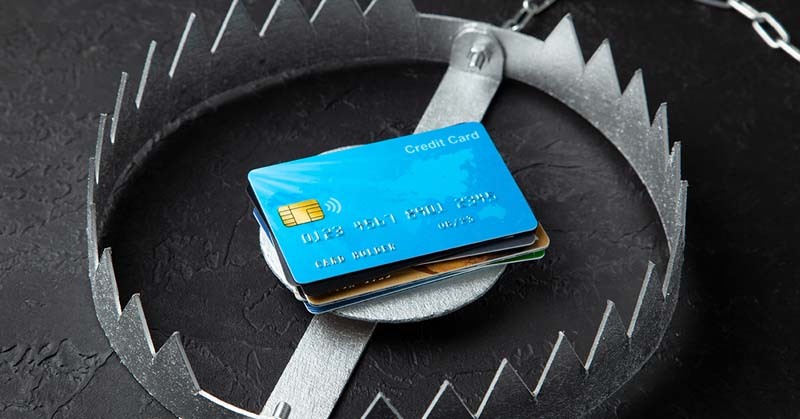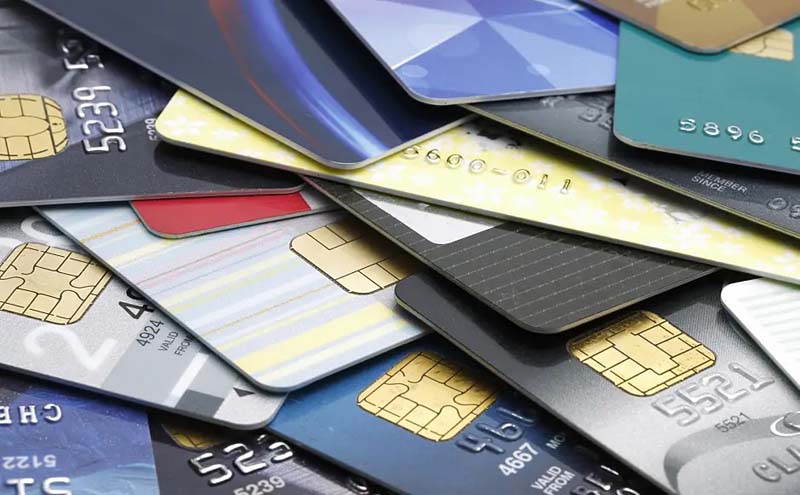Notifications
 News Staff
News Staff![]() -
December 17, 2022 -
Business -
credit card danger
fees
cash advance
-
1.6K views -
0 Comments -
0 Likes -
0 Reviews
-
December 17, 2022 -
Business -
credit card danger
fees
cash advance
-
1.6K views -
0 Comments -
0 Likes -
0 Reviews

DLNews Money by JTFMax:
Having a credit card can be convenient, but it comes with a price. There are several different types of fees that you can encounter when using a credit card. These include Over-the-limit fees, Balance transfer fees, and cash advance fees.
Interchange fees
Interchange fees are a type of payment processing fee which is paid between banks for card-based transactions. The fee is deducted from the total purchase amount during the settlement of the transaction.
In the US, interchange rates are usually updated twice a year by the networks of credit cards used by consumers. The rate can be expressed as a percentage of the transaction or a flat fee. The fee is calculated by the issuing bank and is generally charged in addition to the transaction fee.
Interchange rates vary by business, industry, and transaction type. In most cases, the higher the risk, the higher the interchange fee. For example, a merchant who accepts debit cards is likely to pay lower interchange fees than a credit card.
The cost of using a credit card can be an essential factor for a small business owner. However, the interchange fee has become increasingly controversial in recent years. As a result, several regulatory and antitrust investigations have been carried out in the United States.
The card issuing company charges the interchange fee to the acquiring bank, which then passes the fee on to the merchant. The fee is used to cover the operation costs of the issuing bank. The interchange fee is also necessary to make the credit card processing company profit.
Many factors can affect the interchange fee, including the level of risk, the card scheme used, the network, and the card type. For example, if a merchant requires the customer to present the card in person, the interchange fee can be reduced. This can reduce the risk of fraud.
A merchant should try to negotiate with the processor to get the lowest possible interchange fee. The payment processor can be a bank, credit union, or credit card processing company. These companies will often offer the lowest rates.
In North America, interchange fees average around 1.81% of the transaction value. However, other countries, such as Europe, have established significantly lower interchange rates.
Interchange fees are an important part of the credit card processing system. While they may seem like minor expenses, they can add up to a large percentage of a business's profits.
Cash advance fees
Cash advances are often a convenient way to get access to cash when you need it. But they can also come with fees, so be sure to read the terms of your agreement before taking one out.
Most credit cards charge a fee for cash advances, either a flat fee or a percentage of the advance. You can find out the cost by calling the issuer's customer service department. Depending on the company, the price can range from $10 to $20.
Another fee you may need to pay is a transaction fee. This fee is typically between 3% and 5% of the advance. It will be listed with other fees on your bill. The total cost of a cash advance depends on how much you are borrowing, how long you borrow it for, and your credit score.
If you are looking for a credit card with a low-interest rate, you might want to consider one that does not have a cash advance fee. Some credit unions offer cards without these fees.
You can also check out online services such as SoFi. They offer an account with competitive APY and tools to help you grow your savings. You can also take advantage of their direct deposit option.
If you have a bank account, you can use your card to make purchases at ATMs. You can also buy casino chips or lottery tickets with your card.

Before you sign up for a credit card, you should read the terms of your agreement. Be sure to look for the terms of the cash advance and other services. You can call the card issuer or visit your bank's website.
Getting a cash advance is a step up from a payday loan, but it can be costly. If you don't pay off your balance quickly, you can pay interest for quite a while. You can use the advance to pay for an emergency, but you should be careful to avoid overusing your limit.
It is essential to review your monthly bill and other credit card statements before you apply for a cash advance. It would help if you also looked for any additional fees associated with using your card.
Over-the-limit fees
It is best to avoid over-the-limit fees when using a credit card. This is because you can lose out on rewards, pay high-interest rates, and be charged a penalty APR, which could damage your credit score.
In 2009, the federal Credit Card Accountability, Responsibility, and Disclosure Act (CARD Act) changed how over-limit fees are handled. Now, you must opt-in before the issuer can charge an over-limit fee. If you fail to do so, your transactions may be declined.
It is also important to note that some credit card companies do not charge over-the-limit fees. For example, American Express does not charge over-the-limit fees. This can be advantageous if you do not like paying extra for protection.
In addition, over-the-limit fees have been capped by federal law. These limits are outlined in your credit card agreement. For instance, you can only be charged one over-limit fee per billing cycle. In addition, if you are charged an over-limit fee, you can dispute it with your credit card company. You can also ask for a waiver of the over-the-limit fee.
The over-the-limit fee is charged by your bank or card issuer. Usually, it is a flat fee of $25 for the first infraction. After that, it is generally higher for subsequent infractions within the same six-month period.
To avoid an over-the-limit fee, you should read your cardholder agreement carefully. This will give you a better idea of the fees you will have to pay if you do not stay within your credit limit.
You should also sign up for balance alerts to notify you when you are about to reach your limit. Some banks even send you electronic alerts.
The best way to avoid over-the-limit fees is to pay off your credit card balance in full every month. Not doing so could make getting a new line of credit harder. If you are a responsible user, your credit score will improve.
As with all other aspects of your credit profile, it is crucial to managing your credit cards well. A small over-limit usage may have little impact on your credit score, but frequent over-the-limit use can have a considerable effect.
Balance transfer fees
Balance transfer fees are one of the most important things to consider when moving your debt from one credit card to another. They can add up over time. To help you avoid them, here are some tips.
A balance transfer is a process in which you transfer the outstanding balance on your current credit card to a new card with a lower interest rate. This can help you get out of debt more quickly. You'll also save money. However, this is not always easy, and you may not realize how much it can cost. Therefore, it's best to do your homework before deciding.
You'll want to calculate how much you'll save if you transfer your balance from a high-interest rate to a low-interest rate. You can do this by using a balance transfer calculator. For example, if you have a $1,000 balance on your old card, you would transfer it to a new card with a 0% APR for 12 months. After this period, your interest rate will increase. It's usually 3% of the amount transferred.
Before you decide on a balance transfer, compare the card's introductory APR to the current APR on your other cards. You'll also need to factor in any additional costs associated with the transfer. This includes late payment fees, over-limit charges, and check return fees.
If you can pay off your debt before the introductory period ends, you'll be able to save a lot of money. This can make a balance transfer worthwhile. Even if you don't save much, it can be worthwhile.
The balance transfer fee allows the card issuer to make money off the transferred debt.
It's typically 3% to 5% of the total balance.
This fee can add up to hundreds of dollars if you move into a large debt. To avoid this fee, you'll need to have an emergency fund. You should also call your card's issuer to ask about lowering the fee. It would help if you also researched a variety of balance transfer cards to find the one that's right for you.
"Just a reminder: Before you blow your money, check out the data below. For me, CASH is King! Merry Christmas and Happy Holidays."
Total credit card debt in the US: $925 billion
Average American credit card debt: $3,692
Average credit card balance: $1,665.59
Number of credit cards in the US: 555,360,000
The average number of cards per adult: is 2.22
Total credit card limits available: $4.3 trillion
Total credit card credit available: $3.4 trillion
Percent of credit card balances with 90+ days delinquency: 7.6%
More than half (51%) of credit card holders have increased their credit balance as a consequence of the COVID-19 pandemic
Credit card debt in the United States
A look at cardholders' relationship with their credit card debt
The average credit card debt of US families is $6,270
Roughly 29% of cardholders make the minimum payment or low payments on their debt every month.
The most recent data from the Federal Reserve reveals that credit card interest rates (on accounts that assessed interest) were 16.65% in May 2022. In May 2022, the average credit card interest rate rose slightly from 2021 to 15.13%. Oct 12, 2022. Some Annual Percentage Rates (APR) for Purchases can be 23.24% and higher.
About two-thirds of Americans believe they'll be debt-free within ten years.

Share this page with your family and friends.